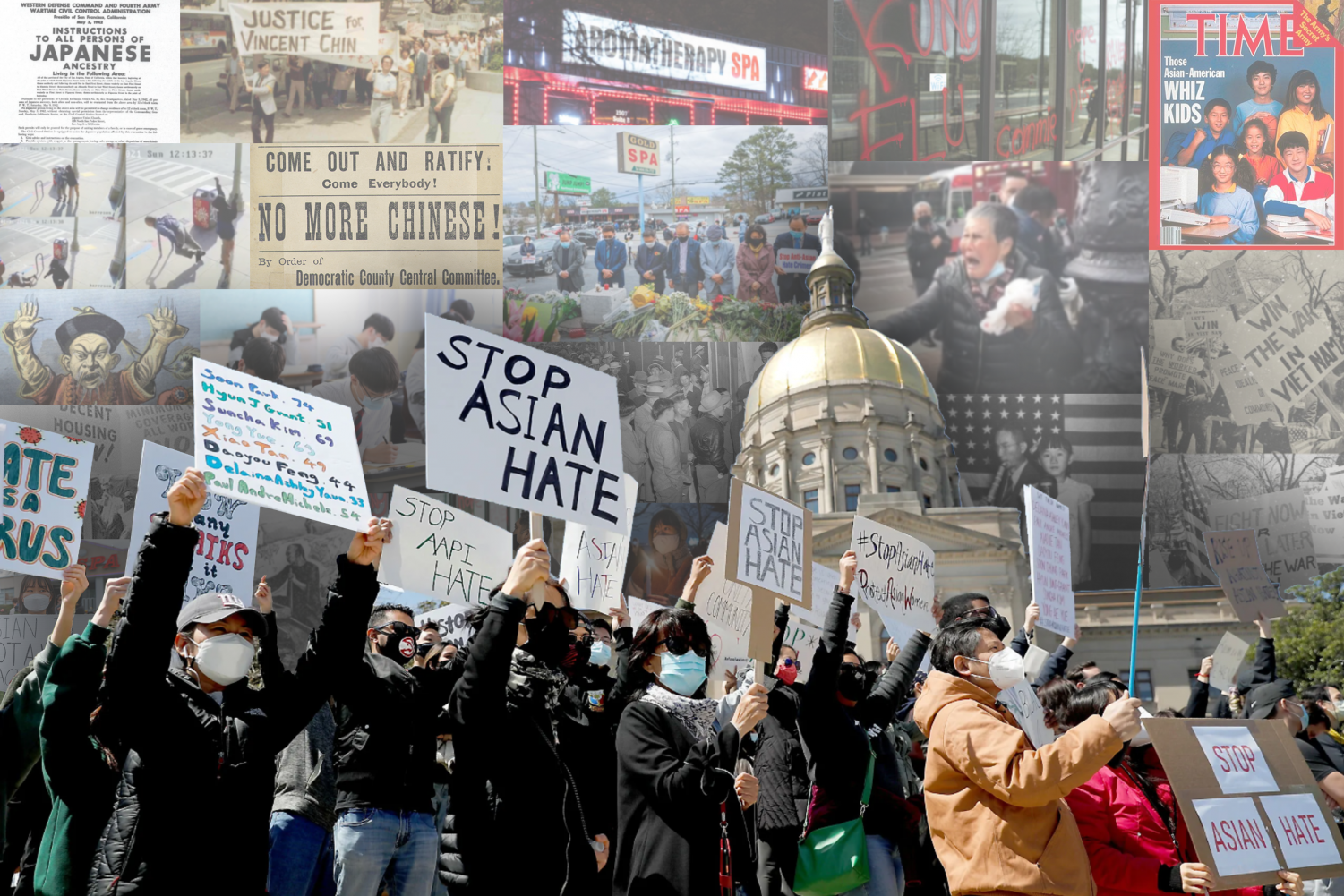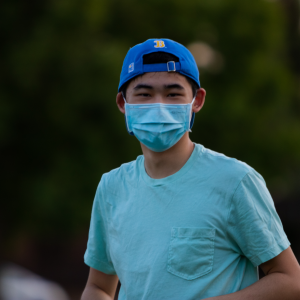
We (Still) Need to Talk About Anti-Asian Hate
April 15, 2021
We need to talk about anti-Asian hate in America.
Seniors are being attacked and robbed in broad daylight. Teens are posting “slap an Asian” challenges on Instagram. Many within our community have been called slurs and yelled to “go back to where you came from.” And on March 16th, 6 Asian-American spa workers – all women – were targeted and murdered in Atlanta, Georgia in a horrific mass shooting.

For some of you reading this, none of the events that have occurred in the past year are surprising. Anti-Asian sentiment has always been a part of our history in America, and many of us have been taught to tolerate the slurs and attacks hurled our way to maintain our status as a model minority in this country. These recent events are merely part of the reality we accept growing up Asian in America, a reality where we are perpetually foreign yet must uphold the high standards associated with our model minority status in this country.
But for the rest of you first hearing about anti-Asian hate crimes this year, it may come as a shock to you that our community has actually been silently suffering for decades. Our story is overlooked, absent in history textbooks, ignored in the conversation surrounding race in America. The Asian-American community has reached a breaking point with recent spikes in hate crimes resulting from the COVID-19 pandemic, and it’s time people stop sweeping the struggles we face under the rug.
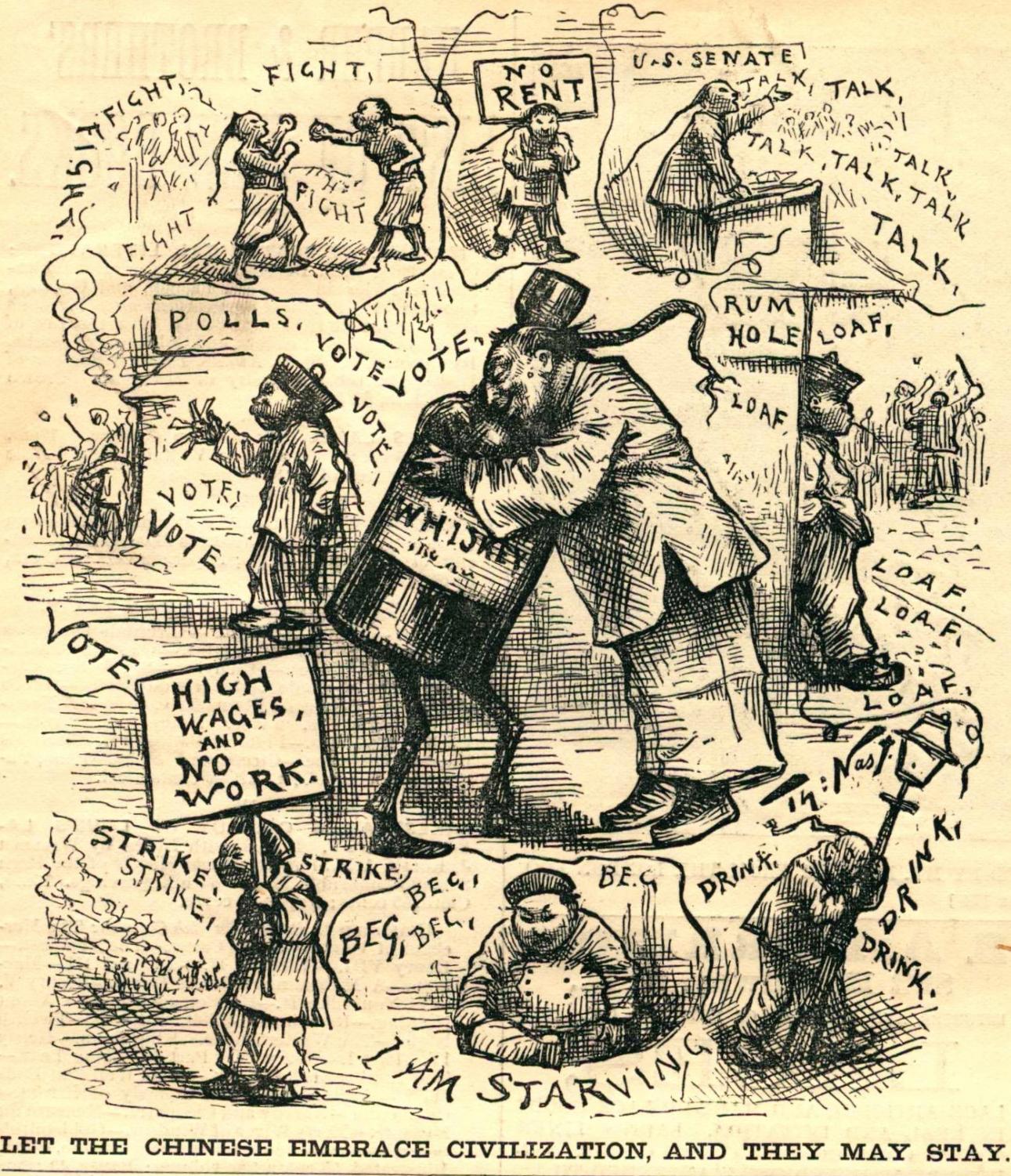
From the very moment Asians first arrived in America in the 1800s, we were cast as outsiders, different from typical European immigrants for bringing our strange culture and customs to the country. A concept of “yellow peril” arose, fueled by fears that Asian immigrants were stealing jobs from whites since they were paid lower wages, even as we became a critical labor force in the development of projects like the Transcontinental Railroad. The media began to portray Asians as exotic creatures, exaggerating and villainizing our yellow skin color and slanted eye shapes as signs that we were dirty and evil. Some of us were even banned from entering the United States altogether when the Chinese Exclusion Act of 1882 was passed, singling out Chinese laborers purely on the basis of their ethnic background.
The anti-Asian sentiment would continue into the 1900s. During World War II, after the attack on Pearl Harbor in the United States, hundreds of thousands of Japanese Americans were arrested and sent to concentration camps without due process. This was despite the fact that most of those who were arrested were second or third-generation Americans who were born in the United States. Even those who enlisted in the military, to fight for the very country taking their rights away, were not deemed American enough to escape internment, despite being some of the most decorated fighters during the war (you can read more about Japanese American military units like the 100th Battalion here).
The decades of anti-Asian sentiment would eventually build up to the tragic murder of Vincent Chin in 1982, who was murdered at his bachelor party in Highland Park, Michigan. Two white men, workers at a nearby car factory, spouted racial slurs and attacked Chin to death, blaming him for the decline of American carmakers and the success of Japanese competition. This was despite the fact that Chin was of Chinese descent.
Justice, our community would find out, is not served equally in this country. The two white men were originally charged with second-degree murder, but were let off with a manslaughter charge and ended up serving no jail time for their actions. The judge ruling over the case would even say that “These weren’t the kind of men you send to jail…you don’t make the punishment fit the crime; you make the punishment fit the criminal.”

The case of Vincent Chin shocked the Asian-American community, forcing many of us to reevaluate our perceptions around race in America. After the verdict, a rallying call from our community arose for stronger hate crime legislation and the protection of our civil rights, leading to the creation of many social justice groups serving the Asian-American community today. The creation of these groups, however, has not prevented the xenophobic hate that is still prevalent today.
In 1900, San Francisco became the center of a bubonic plague that struck Chinatown and other parts of the city. Guess who the government blamed for the outbreak? The Chinese immigrants living in Chinatown, despite the fact that most who were infected were Europeans.
Sound familiar? The current COVID-19 pandemic has left the Asian-American community scapegoated yet again for a pandemic they had little to do with. But despite this, members at the top of our government have called the virus the “China Virus” and “Kung Flu,” villainizing our people as the cause of the virus. What inevitably resulted was a rise of xenophobic behavior in the country targetting Asians. Hate crimes spiked, with over 3,795 incidents of hate documented in the past year by the nonprofit organization Stop AAPI Hate. Asian-owned businesses have seen massive decreases in business, been forced to hire security to protect what customers they do have, and in some cases, are closing altogether. Almost everyone in the Asian-American community has felt the fear associated with the unwanted spotlight placed on our people caused by the COVID-19 pandemic.

More alarmingly, many Asian-Americans seem to have grown numb to the pain and suffering associated with all the hate we have experienced for so many years. Peers I have talked to about the recent rise in hate crimes and attacks often sigh and comment that they feel powerless in the face of actions directly attacking their ethnic background, wishing that more could be done. Instead, we’re quiet. We feel out of place in a country that so often paints as perpetual foreigners, un-American because we have different customs, strange food, and “exotic” languages and features. People assume we aren’t from this country when they see us, even though many of us are born in America. We’re asked “where are you actually from?” even though we’re American just like everyone else. We’re caricatured, stereotyped, and constantly misrepresented in media coverage.
We aren’t the only ones who face this type of prejudice for being nonwhite in this country. Every marginalized community has faced some version of the events I mentioned living in America. The same argument of “they’re dirty, lazy, uneducated, unskilled, don’t speak American, dress funny, act weird” has been used time and time again to deny non-white Americans the same rights and freedoms others in the United States have in this country. Anti-Asian hate is not simply just an Asian issue, it’s part of the broader issue America has with racism and white supremacy. And the only way we can solve it is if we confront the entire issue head on.
So despite everything the Asian-American community has suffered for decades, why haven’t we spoken up more to help ourselves? And how will we be able to overcome the traumas that we have carried for so long?
What many people don’t understand is the effect the model minority myth has on our community and how we’re taught to respond to suffering. First coined by sociologist William Petersen in the 1960s to describe Asians as a group that achieved success in the United States despite being an ethnic minority, the concept of being a model minority has quickly been used to stereotype our people, often as a political tool to advertise that America is not so bad for nonwhite people. We’re painted as a success story, a community who in the face of marginalization has been able to succeed and prosper, become well-educated, and attain the American Dream instead of becoming a “problem minority.”
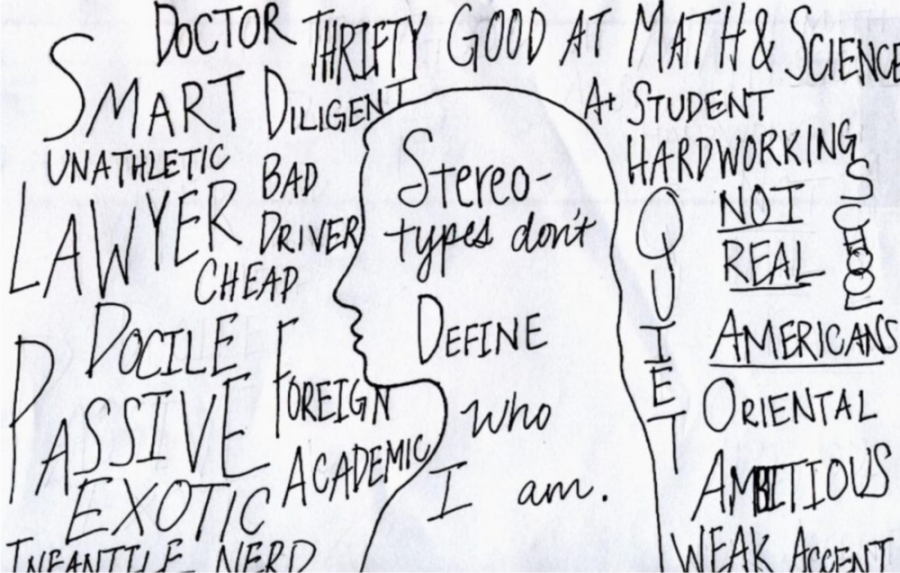
Because of this image America has created for our people, we are pressured to conform to the stereotype. We are only American when we fit into the image of what other people expect of us, and we are foreigners when we don’t. We’re told to be invisible in the background and not make noise. We internalize our traumas. We’re told to tough it out instead of seek help in the face of failure, knowing that previous generations worked so hard to get us to where we are today so that we can grow up in a country as free as America. We do whatever we can to align with white people, letting go of our culture in favor of the trends and customs that will make us seem less foreign.
That’s why Asian-Americans have been silent. That’s why our mental health suffers and hate crimes go unreported. And when American society accepts you conditionally, you question whether you have anything valid to say about hardship and race.
By design, the model minority myth has been used to drive a wedge between Asians and other minority communities. And too often, our community has sided against our Black and Brown communities because we feel that standing above them is better than nothing, even as we’re caught in the trap between being perpetual foreigners and a model minority.
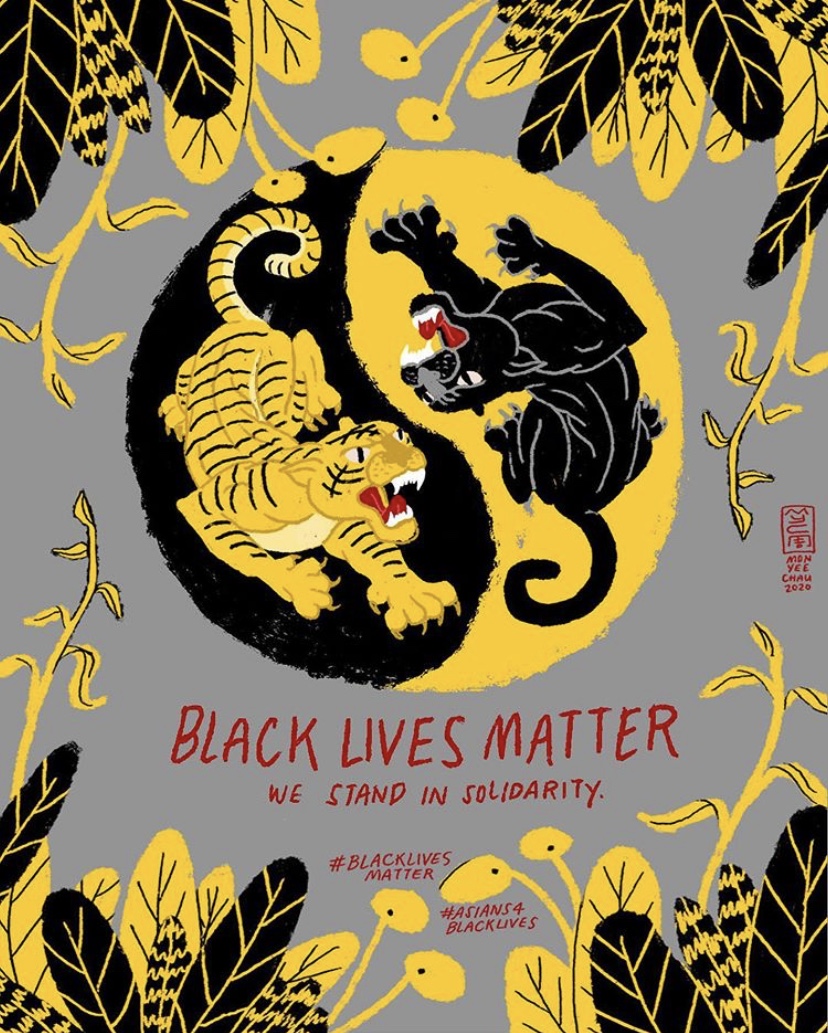
That’s why we feel powerless. But to my fellow Asians, that’s why we must ally with our fellow marginalized communities that are suffering too. We must not give in to the silence we are so used to as model minorities. We must have solidarity if we are to overcome the evil of racism in this country fueled by white supremacy. Remaining silent is how hate and discrimination will continue. Being loud and fighting back is how we dismantle the forces at play upholding the racist status quo.
And to any white people reading this, you have a role to play too. You can better educate yourselves on how Asians got to where they are today. You can reach out to your Asian peers and look out for one another on the streets as others spew hate our way. You can support Asian-run businesses, and take part in our customs and celebrations. But you will always be able to do more to be anti-racist and help fight the racism your people perpetuate in America.
You can find resources on being better allies here and here. We may not be able to take down these problems once and for all immediately, but taking the first step will help greatly in ensuring that everyone in America can attain the freedom and success we all aspire to achieve in this country.
Update: 24 hours after this article was published, 4 Sikhs were killed in Indianapolis in yet another mass shooting in America. While it is too early to tell if this incident was motivated by race like so many others this year, it is important we recognize that hate targeting anyone in the Asian-American diaspora is hate against our entire community. We must stand with all of our fellow hurting Asians ― Sikh, Muslim, or otherwise ― if we are to overcome this hate.


